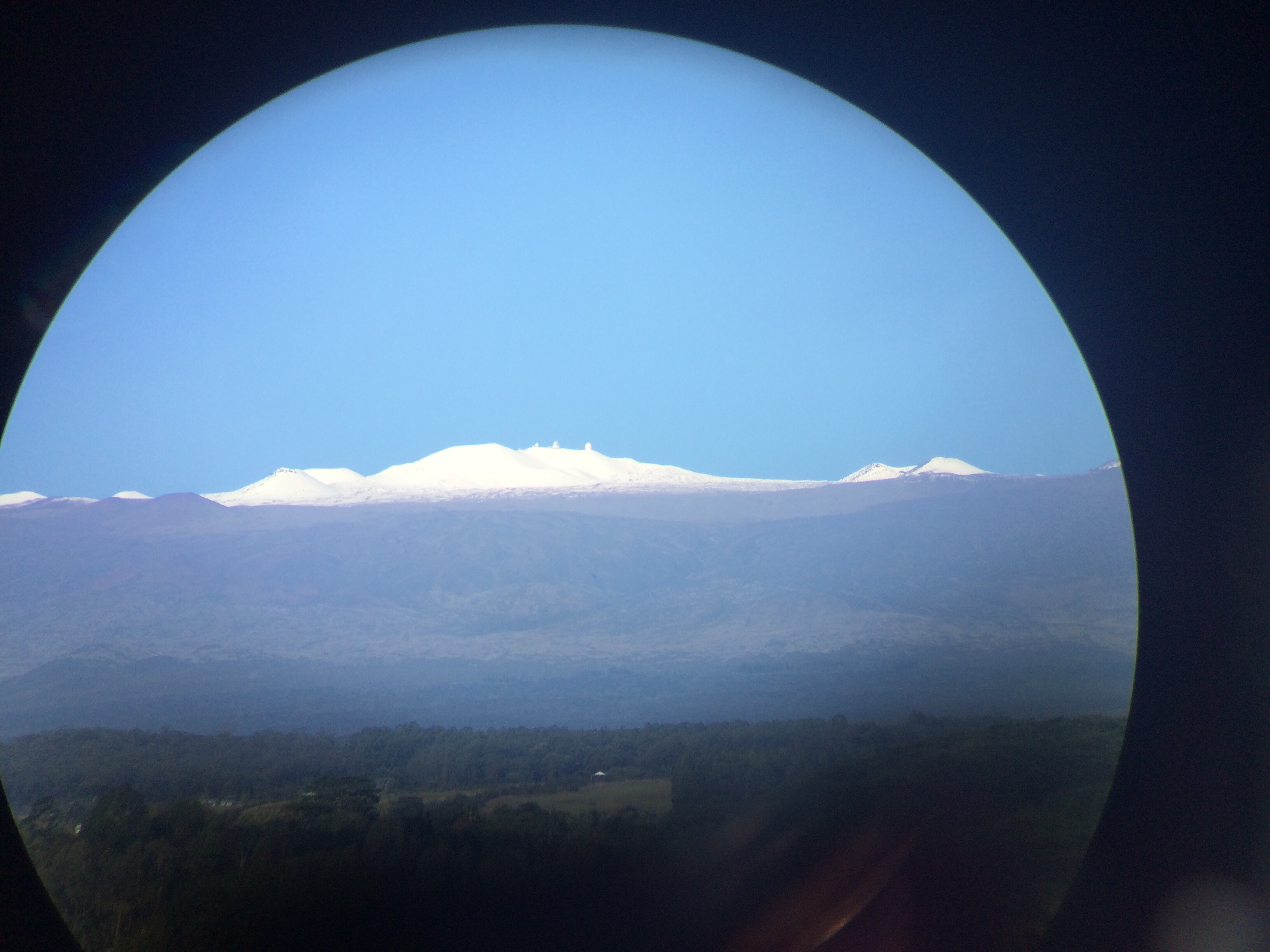Tonight marks the first open-shutter time in a ten-night observing run for my exoplanet research collaboration, the California Planet Survey. We are using the W. M. Keck Telescope with the HIRES instrument, a high-resolution echelle spectrograph that helps us study how much each star moves from night to night to night based on the gravitational pull of its planets. Our radial velocity measurements allow us to measure the masses of known exoplanets and to detect additional exoplanets orbiting the stars we study.
Technically, we were supposed to start observing three nights ago, but a massive storm dumped 16″ of snow on Mauna Kea, blocking the one and only dirt access road to the summit and halting all telescope operations for three nights. Word on the street is many of the locals drove up as far as they could go and filled their 4×4 trucks with snow to bring down for Christmas. I imagine children building drippy snowmen on the coarse black a’a beaches, then tearing off clumps of melting slush to hurl at each other in the world’s warmest snowball fight.
I did not see any of the summit shenanigans; I spent the day skirting the mountain as I drove from my vacation spot in Pāhoa to the W. M. Keck Observatory headquarters in Waimea. Rounding a bend in the road just outside Hilo, I caught a face-on view of Mauna Kea that made me laugh out loud and almost cry. I’ve spent a couple weeks on the Big Island so far in my life, and Mauna Kea is usually shrouded in clouds that serve as a stark reminder of just how big and unconquerable the mountain is. The openness and sheer white beauty of the mountaintop today took me by surprise.

The startlingly clear view of Mauna Kea from the ground heralded fantastic observing conditions. My colleague Howard Isaacson, who is observing from Berkeley, CA, reports 0.6″ seeing, which is in the upper quartile of weather excellence for Mauna Kea. With this excellent seeing, the stars are focusing into small points of light in the telescope, allowing us to collect light quickly, easily, and accurately. For our science programs, conditions like this equate to the productivity of two nights with average conditions. Fingers crossed the weather is this good for the rest of the run!